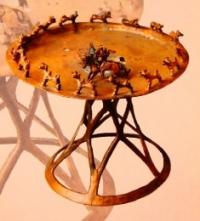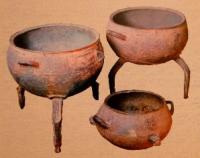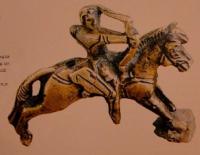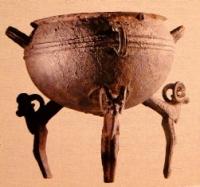You are here
Ancient Almaty.




Tours over places of interest of Almaty.
"This dirham is coined Al.m.t."
Almaty Silk Road Tours.
The modern history of Almaty began in 1854 with the strengthening of Fort Vernyi, a Russian outpost near the Malaya Almatinka River in an area then known as Russian Turkestan. The settlement was first mentioned in the works of the Moghul ruler, writer, and poet Zahiriddin Mukhammed Babur in the first part of the 16th century.
Further mention of Almaty was made by Babur's contemporary, Mukhammed Khaidar Dulati, author of Tarih-i Rashidi. In 1979 archaeologists obtained irrefutable data about the city of Almaty from numismatics, the study of coins.
Two silver coins were found in the territory of the Almaty Frontier Institute. In appearance and weight, they seemed to be from the Chagataid cities, dating between the end of the eighth century and the beginning of the XIVth century.
However, the coins' inscription could not be understood. Famous orientalist and numismatist Vladimir Nastich concluded that the coins were not brought into Almaty but were coined in Semirechie, a medieval city located on the site of present-day Almaty, where a mint most likely existed in the eighth century.
In 1990, two other coins were found. Almost nothing was legible on one of them. But on the second was written: "This dirham is coined Al.m.t." Nastich concluded that the coin was made in the eighth century in a city whose name was similar to that of modern-day Almaty.
Through this evidence, archaeologists were able to decisively conclude the age of the city. During the Saka period (from the seventh century B.C. to the beginning of the Common Era), both the Saxon and Ussun tribes inhabited the Almaty region.
Multiple burial grounds still exist from that period, the largest of which belonged to the aristocratic Saxon kings. These mounds were discovered in the late 19th and early XXth centuries among the one-story buildings of the city.
Today, the mounds have been demolished and hidden under Almaty's many-storied buildings. However, some remain - including the large Borolday burial ground that occupies a high plateau in the northwestern part of Almaty known by the same name.
Dozens of burial grounds are located here, with the largest being 20 meters high and 150 meters in diameter. They rise against the snow-peaked mountains and yield unforgettable views, especially during springtime, when a scarlet sea of poppies surrounds the mounds.
With its rich burial places and funeral structures, the Boralday Necropolis resembles the burial ground Issyk, where the famous "Golden Man" was found. In recent years community and scientific circles have agreed to establish an open air archaeological park in the territory of the Boralday Necropolis. In order to establish the Borolday Saxon Burial Mounds Museum, 430 hectares were released from the city's available land.
This extraordinary project is the first step in Almaty's effort to build up its historical tourism infrastructure. Construction has already begun. The most interesting findings related to the Saxons and Ussuns are bronze lamps, sacrificial pots, and tables.
A large collection of these items was discovered in the Almaty area. Historically these items were used for ritual celebrations in and around ancient sanctuaries. The most famous finding near Almaty is the "Kargaly Diadem."
The diadem was found in the Kargaly burial site in the Kargaly Gorge, part of the Zailiysky Alatau Mountains. Rings, earrings, and other jewellery were found along with the diadem. The golden diadem itself reflects Hellenistic culture.
It is decorated with vegetative ornamentation and the figures of deer, a phoenix, and a winged tiger with a woman sitting on it. Also on the diadem are a winged horse on a pedestal, a dragon with a woman on its back, birds, a wild goat with a woman on it, a bear, and an argali sheep with a woman sitting on it.
The animals' eyes are made of cornelian and almandine, while the bodies are encrusted with turquoise. Scientists have struggled to understand the meaning of the images and identify their origin.
The images have some connection with Dionysus, a fertility god. Scientists have concluded that the Kargaly diadem illustrates the celebration of Dionysus, which has connections with the Eastern holiday of Nauryz.
Authority:
Karl Baypakov. Magazine “Tegri” № 5, 2009.







